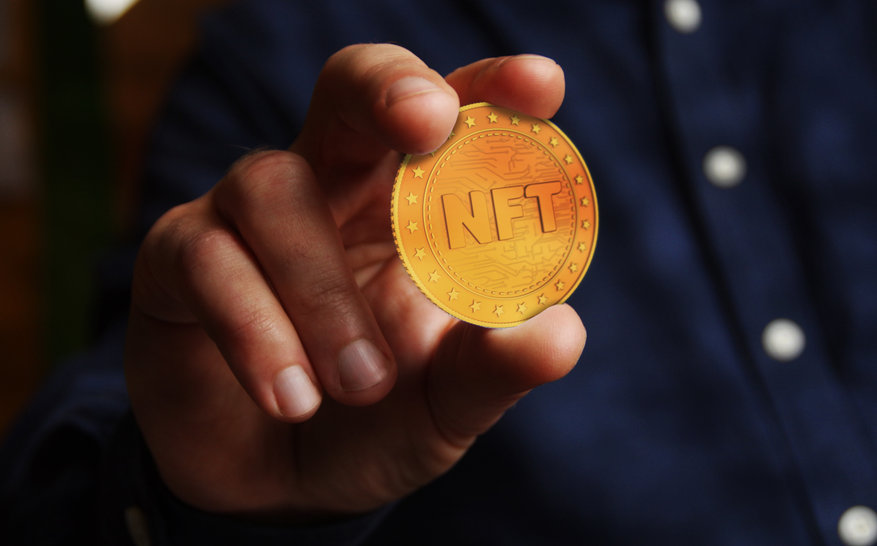NFT sales volume increased to $24.9 billion in 2021, compared to just $94.9 million in 2020. Based on its Secretary’s recent comments, we can soon expect the first enforcement action against a Non-Fungible Token (NFT) issuer to be announced by the Securities and Exchange Commission, at some point in the near future. As securities law continues to adapt to the evolving technologie, it is likely that some NFTs will be deemed to be securities, and therefore, will need to be compliant with both Federal and State securities laws.
- Are all NFTs securities?
- Not all NFTs are securities. Tokens connected to unique pieces of art, collectibles, or others which serve as blockchain certificates of authenticity, are unlikely to be rendered securities.
- Digital certificates, although they use blockchain technology and are tokenized, are not “securities” simply because they have a market value and can be resold. The tokenization does not change the purpose and function of these – they are still certificates, with the advantage of blockchain to facilitate transfer and tracking.
- In these cases, NFTs are stand-alone assets whose value is determined at sale. They appreciate in value on their own, and there is no expectation that profits will be generated from the efforts of third parties.
- Price appreciation resulting solely from external market forces – such as inflation and consumer taste – impacting the supply and demand for the asset is not considered ‘profit’. Therefore, an NFT should not be deemed a security simply because it can increase in value.
- Why would NFTs be considered securities?
- In the case of digital art, the work “The First 5,000 Days” NFT by artist Beeple recently sold for $69.3 million in 2021, becoming the highest grossing NFT ever. Although digital, it is a work art, like any other. And like physical art, some view art collection as investment. Yet a physical painting is not a security, then why would a digital art be considered as a security?
- In the case of NTFs, if they are offered to the public with a promise of returns and liquidity, as well as continued services by the issuing party, that may constitute an investment contract, and thus becoming a security.
- When are NFTs deemed securities?
- Aside from digital art, NFTs can be employed in a great number of transactions. Essentially, NFTs are units that can verify ownership of property; therefore they can be used to prove ownership of many things: art, stock, land, IP.
- NFTs can be deemed securities if they pass the “Howey Test,” a regulatory standard used to determine if a transaction constitutes an investment contract, according to the Securities and Exchange Commission (SEC).
- The definition of a security comes from the U.S. Supreme Court via this 1946 court case, SEC v. W.J. Howey Co, which laid out a four-part test for determining if an investment is a security.
- An investment is a security when it is “(1) investment of money, (2) in a common enterprise, (3) with a reasonable expectation of profits (4) to be derived from the efforts of others.”
- So how does this work with NFTs?
- Well, let’s say that instead of you selling a single tokenized work of digital art (meaning, with a blockchain certificate of authenticity); you’re selling tokens that provide fractional ownership in a project or business, that allows token holders to vote on the governance of the entity, as actively managed by others, and share in its profits.
- In that case, you’re (1) selling a share of property (2) owned by a group of people (3) expecting to generate profits (4) agreeing to have managers operate it.
- One, you’re selling a share of property because people are investing money by buying tokens;
- Two, it’s owned by a group of people, since those tokens will work on the blockchain project, which is a common enterprise;
- Three, buyers are expecting to generate profits, since they are buying those cryptocurrency tokens believing the project will succeed and with tokens increasing in value, to be sold at a profit;
- Four, you are not actively managing the project, and are relying on others’ efforts to build and then operate the enterprise.
- The determination of whether an NFT is a security depends on the economic nature of the transaction and the way in which the asset is offered to the public, including promotion and marketing.
- What factors are important for determining securitization of NFTs?
- If NFTs are sold to the general public with the promise of profits or liquidity, they begin to resemble a speculative investment as opposed to a digital collectible.
- If the issuer of the asset is influencing a secondary market, or providing services to increase the NFTs’ value, then it may also be considered a security.
- NFT issuers should avoid marketing their assets as investments that can reward buyers with appreciation, profit or dividends.
- Issuers should also avoid marketing NFT sales as fundraising to build further entities or platforms, with promises of future sales.
- Issuers should also be mindful of how they promise royalties on the assets. An example of this is when a feature is built into the smart contract that automatically transfers to the original NFT issuer a percentage of the sale price every time the NFT is sold. The original NFT issuer may decide to sell such rights to future royalties. In this case, an NFT that guarantees a percentage from sales of a pool of assets may be considered a fixed-income security.
- A key factor in analyzing NFTs under the Howey test is whether the buyers have a reasonable expectation of profits or returns, generated from the efforts of others. A buyer may expect a return by participating in dividends or other methods of appreciation on the asset, such as selling at a gain in a secondary market.
- What are Fractional NFTs?
- A Fractional-NFT is the ownership of a portion of an NFT. It allows asset owners to mint tokenized fractional shares of ownership of the asset, to sell and own with others.
- Continuing with the digital art example, let’s say that you wish to fractionalize the work, to allow ownership to be shared with a group of people. Does fractionalization automatically make the asset a security? Not exactly. It depends on the purpose of the fractionalization.
- If you create a cooperative to manage the work among its owners, for decisions such as: Where to house it? How to insure it? When to sell? In that case, each member will have voting rights; and voting rights, does not make the token a security.
- A similar cooperative model can be used for an NFT by using a Decentralized Autonomous Organization (DAO). A DAO can provide voting rights to members and establish structures of governance. A DAO is a governance mechanism and doesn’t constitute a security. Hence, an NFT structured as a DAO will not fall under securities regulations, to the extent it does not fulfill the Howey Test discussed above.
- However, if the purpose of the fractionalization of the physical painting is to create shares to be traded in a secondary market and provide liquidity, then in this case these “factions” will fall under securities laws.
- What happens if an NFT is deemed a security?
- NFTs offered and sold as securities are subject to securities laws and regulations, such as the requirement to register with the SEC.
- Mislabeled and non-compliant NFTs found in violation of anti-fraud provisions of securities laws face civil and criminal penalties
- Mislabeled NFTs may cause improper characterization of the asset for tax purposes, which may result in improper reporting of any income, loss or gain
- What is the proper way to securitize an NFT?
- A technology roadmap exists that includes creating an NFT, securitizing it, qualifying it via an exemption from registration with the SEC, issuing it on the blockchain, meeting secondary trading compliance rules, and listing it on an Alternative Trading System (ATS).


